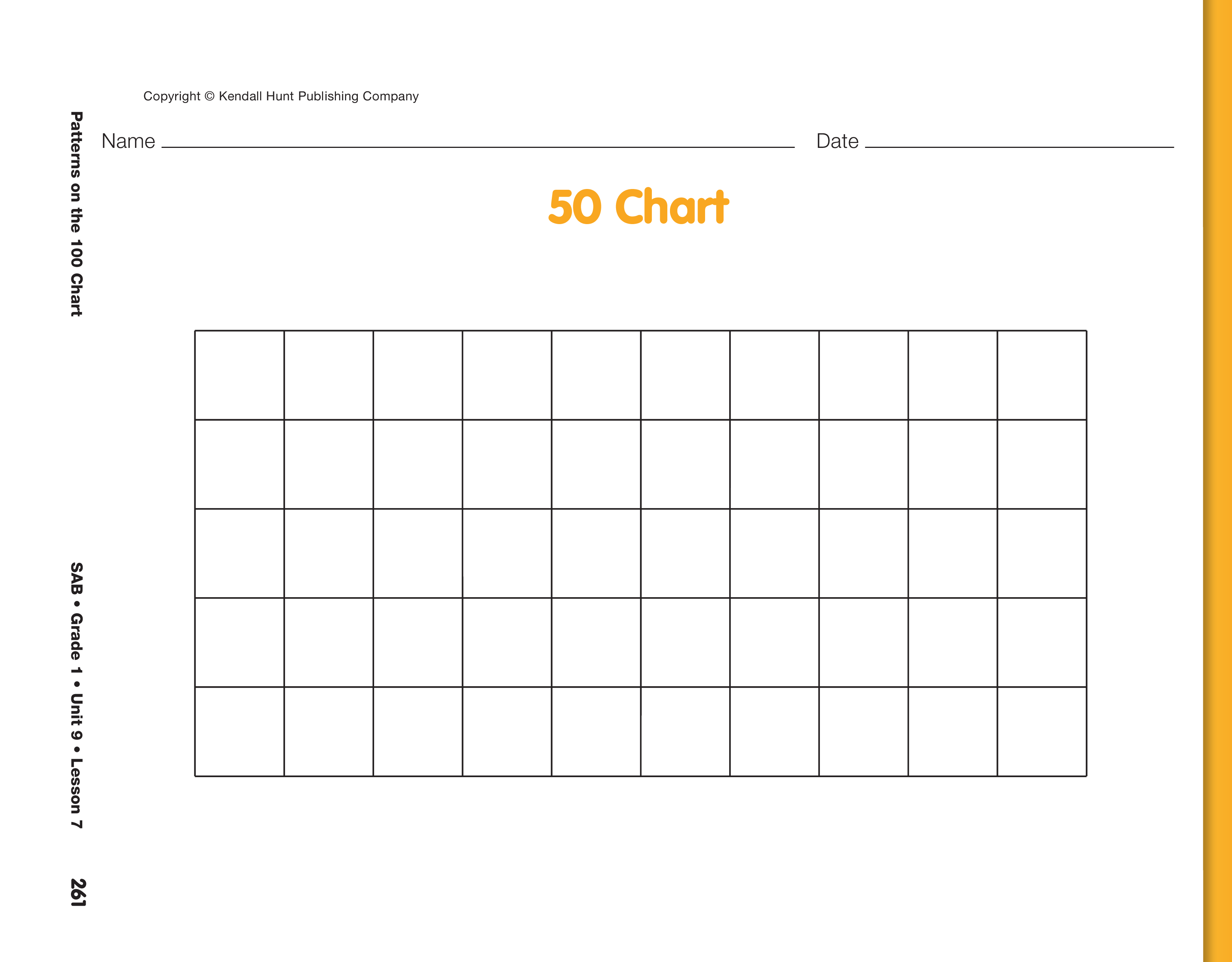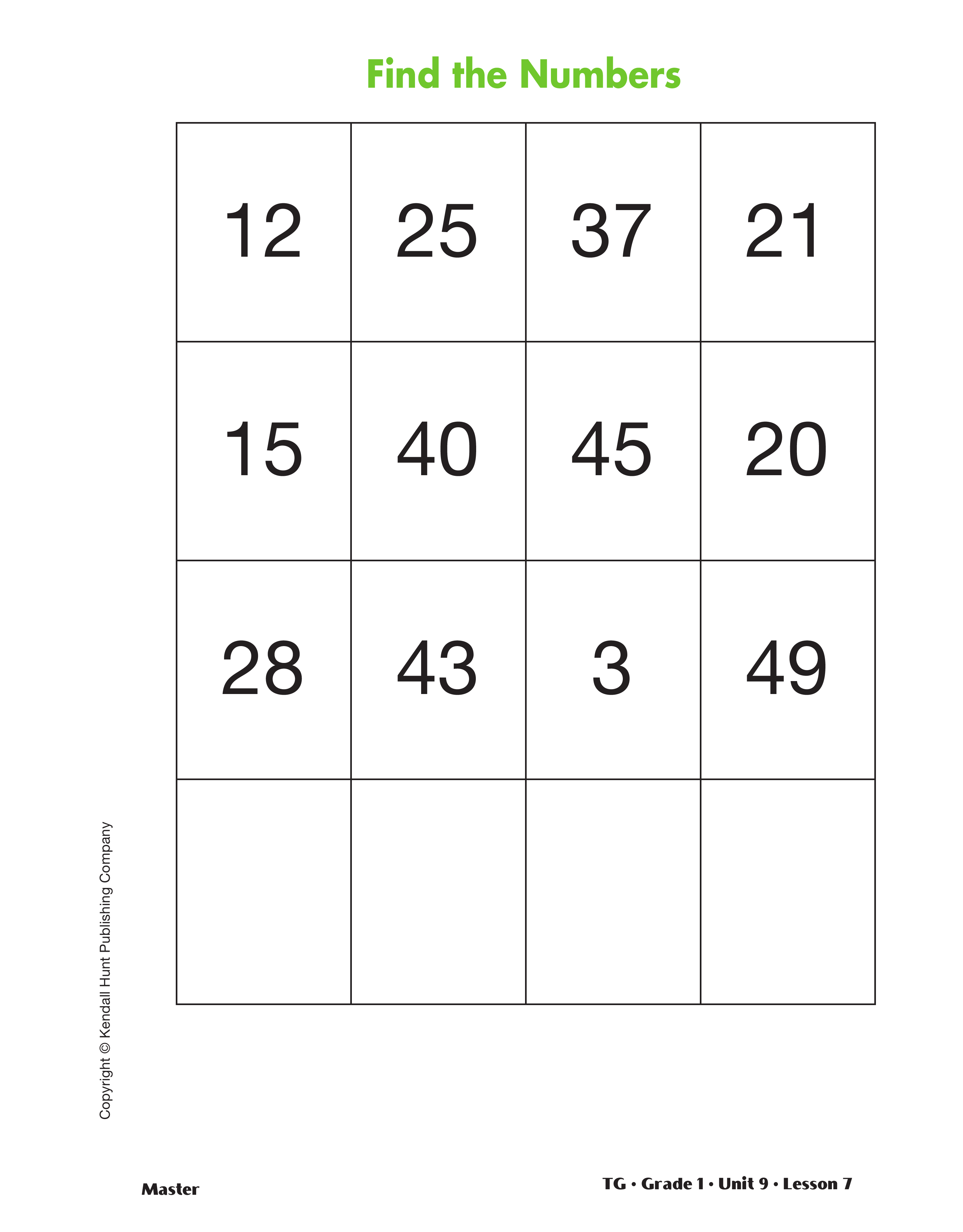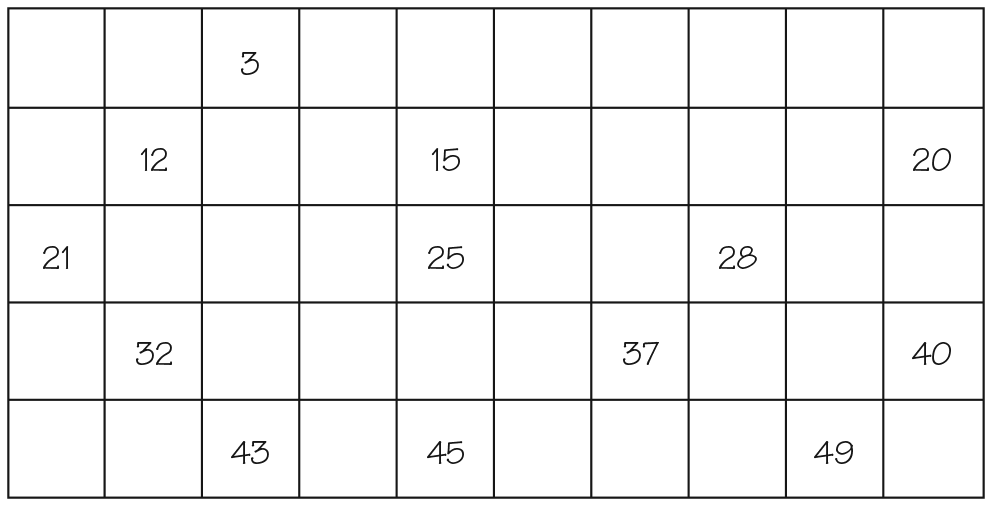Patterns on the 100 Chart
Est. Class Sessions: 2–3Developing the Lesson
Part 1: Building the 50 Chart
Represent Numbers on Ten Frames with Connecting Cubes. Distribute the Ten Frames and Number Line and 100 Chart pages you prepared in Lesson 3. Review representing two-digit numbers with ten frames, as in the packing Grandma's cookies activities in Unit 5 Lesson 3 Sharing Cookies. Select a number, such as 27, and have students place connecting cubes in the ten frames to determine how many tens and how many ones are left over. Repeat if necessary.
Next have students take all the cubes from each ten frame and lock them together to make trains of ten cubes. The leftover ones should also be locked together to make a short train. Students line the trains up for a visual image of the number. Have students represent another two-digit number with cube trains, using ten frames as necessary.
Ask:
Show Numbers on the 50 Chart. Direct students' attention to the display of the 50 Chart page from the Student Activity Book. Show students the number 32 and ask them to build it with trains of 10 and leftover ones. As the students are building, build trains on the display to model the process. Ask the students to find 32 on the 50 Chart using connecting cubes. Beginning at the top of the chart, use the three trains of ten cubes each to cover the first three rows of the chart and use the two leftover cubes to cover two more squares in the fourth row. See Figure 1.
Ask:
Remove the cubes and write "32" in the last square covered. Ask each student pair to follow your example and cover their 50 Charts with the cubes and record the number 32. Remind them to cover the chart beginning at the top left, using the trains of ten first.
Ask:
Practice these steps with a few other numbers that are not on the Find the Numbers Master (e.g. 16, 23, 36, 48).
Distribute one copy of the Find the Numbers Master to each student pair. Add numbers if needed using the four blank boxes. Ask each pair of students to work together to use trains of connecting cubes to locate these numbers on the 50 Chart. When students finish locating and recording the numbers the chart should resemble Figure 2.
Display a partially completed 50 Chart and discuss patterns students might use to complete the rest of the chart.
Ask:
Instruct students to fill in the rest of the numbers on the 50 Chart while asking similar questions about other numbers and patterns. Once students have filled in all the numbers on their charts, have pairs trade charts and check each other's work.
















